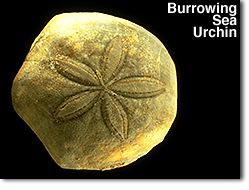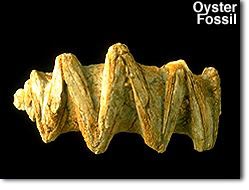Cretaceous Fossils of the Simsima Limestone Formation
 Much of this ancient marine fauna of crabs, sea-urchins, bivalve shells, corals and sea worms would be easily recognisable to us today. However, there are also fossils from some groups of animals that have completely disappeared, having become extinct at the end of the Cretaceous period. These include the ammonites, free-swimming relatives of bivalves and sea-snails that possessed a spirally-coiled chambered shell. Another group of marine animals that no longer exists today are the rudists, a highly specialised kind of bivalve with a large, horn-shaped lower valve that rested on or in the sediment. A rudist found by Natural History Museum palaeontologists from Jebel Rawdah has been given the new scientific name of Glabrobournonia arabica . Much of this ancient marine fauna of crabs, sea-urchins, bivalve shells, corals and sea worms would be easily recognisable to us today. However, there are also fossils from some groups of animals that have completely disappeared, having become extinct at the end of the Cretaceous period. These include the ammonites, free-swimming relatives of bivalves and sea-snails that possessed a spirally-coiled chambered shell. Another group of marine animals that no longer exists today are the rudists, a highly specialised kind of bivalve with a large, horn-shaped lower valve that rested on or in the sediment. A rudist found by Natural History Museum palaeontologists from Jebel Rawdah has been given the new scientific name of Glabrobournonia arabica .
 Corals were common in these waters, sometimes forming dense bush-like thickets or patch reefs and sometimes occurring as button-like individuals (some rudists resemble these corals) scattered across the ocean floor. On the edges of the shoals, massive brain corals are to be found. Probably the most unusual of all the corals is the fan-shaped and solitary Diploctenium , which attached itself to the sea floor by a thin stalk. Rather delicate for potential preservation as a fossil, it is only found in rocks deposited in the more sheltered environments. Corals were common in these waters, sometimes forming dense bush-like thickets or patch reefs and sometimes occurring as button-like individuals (some rudists resemble these corals) scattered across the ocean floor. On the edges of the shoals, massive brain corals are to be found. Probably the most unusual of all the corals is the fan-shaped and solitary Diploctenium , which attached itself to the sea floor by a thin stalk. Rather delicate for potential preservation as a fossil, it is only found in rocks deposited in the more sheltered environments.
Of the 45 sea-urchins now known from the Simsima Formation, 14 species are new to science and some of them have been named after places where they were found or, in one instance, after a person who has helped the Natural History Museum team - Codiopsis lehmannae . Specimens named after places in the Emirates are Prionocidaris ?emiratus , Heterodiadema buhaysensis, Goniopygus arabicus , Circopeltis ? emiratus , and Petalabrissus rawdahensis .
|